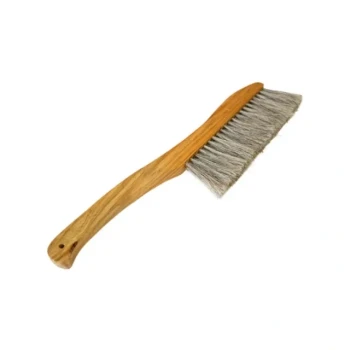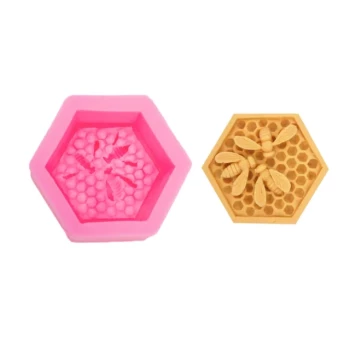Ultimately, the primary products harvested from a beehive are honey and beeswax. Honey serves as the bees' food source, while beeswax is the structural material they use to build their comb. Beekeepers harvest the surplus of these materials, which have significant value for human use in food, cosmetics, and other industries.
While most people associate beekeeping with honey, the true scope of a hive's output is much broader. A holistic view includes not only the primary products like honey and wax, but also other valuable substances and, most importantly, the essential service of pollination.

The Primary Harvest: Honey and Beeswax
The most common and economically significant products of beekeeping are honey and beeswax. They are the foundational materials that a beekeeper manages and harvests.
Honey: The Hive's Energy Source
Honey is the substance bees create from plant nectar. They process and store it in wax honeycombs as their primary carbohydrate and energy source, especially to survive the winter.
For humans, honey is a natural sweetener, but its properties vary greatly based on the floral source. A beekeeper harvests only the surplus honey, always leaving enough to ensure the colony's health and survival.
Beeswax: The Hive's Architectural Marvel
Beeswax is a natural wax produced by honey bees. The bees secrete this wax to construct the intricate hexagonal cells of their honeycomb, which are used to store honey and raise their young.
As a byproduct of honey extraction, beeswax is a valuable commodity. It is prized for its use in making candles, cosmetics like lip balm and lotions, and as a protective wood and leather polish.
The Overlooked Product: The Critical Role of Pollination
While not a tangible item you can bottle, the most valuable "product" of beekeeping is often pollination.
More Valuable Than Honey
The economic value of bee pollination for agriculture far exceeds the value of all other hive products combined. Many crops, from almonds and apples to blueberries and cucumbers, depend on insects like honey bees for pollination to produce fruit.
Supporting Ecosystems
Beekeeping for pollination services is a major industry. Beekeepers transport their hives to farms and orchards to ensure crops are adequately pollinated, directly contributing to food security and the health of both agricultural and wild ecosystems.
Understanding the Trade-offs: Yield vs. Hive Health
Successful beekeeping is not about maximizing extraction but about maintaining a healthy, thriving colony. This requires a careful balance.
The Principle of Sustainable Harvesting
A responsible beekeeper understands they are the custodian of the colony. Harvesting too much honey, especially before winter, can lead to the starvation and death of the hive.
The goal is to take only what the bees can spare. This ensures the colony remains strong enough to survive, defend itself from pests and disease, and continue its work of pollination and production the following season.
The Beekeeper's Role
The equipment mentioned in beekeeping guides—like smokers and hive tools—are used to manage the bees with minimal stress. This careful handling is essential for inspecting the hive's health and determining the appropriate amount of honey and wax to harvest without causing harm.
Making the Right Choice for Your Goal
Your approach to harvesting will depend on your primary reason for keeping bees.
- If your primary focus is honey production: You will prioritize managing strong, populous colonies and providing them with ample forage to maximize surplus honey.
- If your primary focus is supporting agriculture: You will manage your hives for peak population during the bloom time of specific crops, and pollination contracts become your main source of income.
- If your primary focus is hobby beekeeping or conservation: You may harvest very little, instead concentrating on the well-being of the bees and their role in the local environment.
Understanding these different outputs allows you to appreciate the beehive as a complex system that produces far more than just a sweet treat.
Summary Table:
| Product | Primary Use | Key Value |
|---|---|---|
| Honey | Bees' food source; human sweetener | Natural food product, energy source |
| Beeswax | Comb construction; candles, cosmetics | Versatile material for various industries |
| Pollination | Crop fertilization; ecosystem support | Critical for agriculture and food security |
Ready to optimize your beekeeping operation? HONESTBEE supplies commercial apiaries and beekeeping equipment distributors with the high-quality supplies and equipment needed to maximize honey, beeswax, and pollination yields sustainably. Let us help you build a stronger, more productive hive. Contact our wholesale experts today to discuss your needs!
Visual Guide

Related Products
- Classic Wooden Bee Brush with Double-Row Boar Bristles
- Premium Triple-Row Horsehair Bee Brush
- Wooden Bee Brush with Triple Row Artificial Fiber for Beekeeping
- Heavy Duty Cowboy Beekeeper Hat with Visibility Veil Outdoor Professional Beekeeping Protective Gear
- Colorful Silicone Beeswax Foundation Mold Mould for Beekeeping
People Also Ask
- What is the purpose of a bee brush? Gently Manage Your Hive with Precision
- What is a Bee Brush and how is it used? Master Gentle Bee Handling for Your Apiary
- Why do beekeepers use a bee brush? The Essential Tool for Gentle Bee Handling
- What are the characteristics of the bristles on a bee brush? Designed for Gentle Persuasion, Not Force
- Why is a bee brush important? Essential for Gentle, Safe Hive Management



















